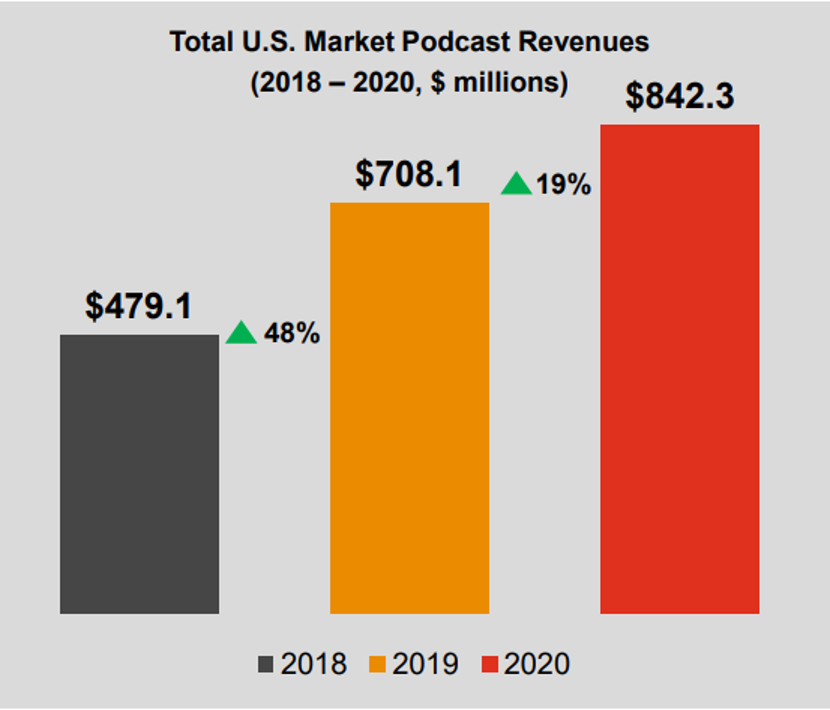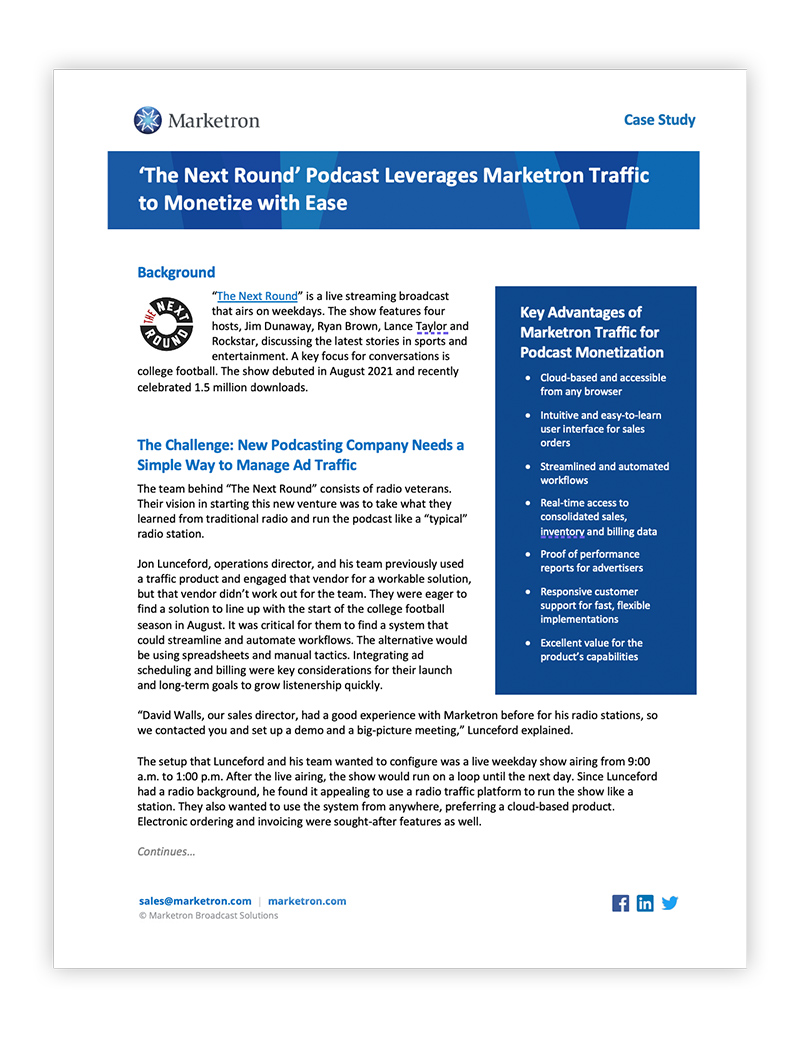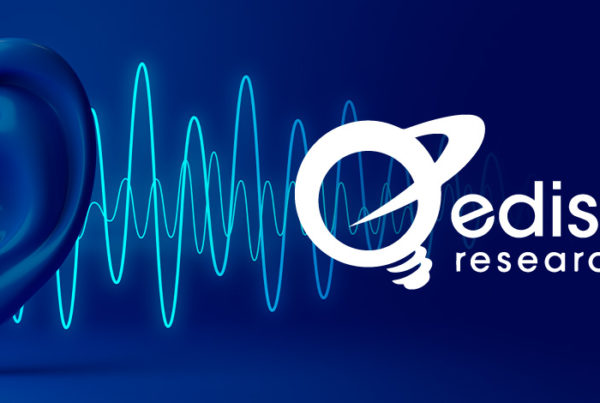Podcasts changed the digital audio landscape. They’ve become a favorite activity for various consumers, with 57% of Americans listening to them. Their appeal crosses demographics, and listenership grew in the over-55 category in 2021. That mix of listeners is likely due to the many different subjects podcasts take on, from true crime to sports to tech. Many podcasters struggle with monetizing efforts in a consistent, automated way. What’s the secret to simplifying this? Monetizing podcasts with traffic systems.
Should You Monetize Your Podcast?
Your podcast can be a new revenue stream if it’s not already. According to the U.S. Podcast Advertising Revenue Study, podcast advertising hit $843 million in 2020, a 19% year-over-year increase. The report also projected that 2021 numbers would be around $1 billion.

Image: IAB
This increase coincides with consumer behavior trends of more podcast listening since the pandemic, and it represents a key area of growth for the broadcast industry. Whether you’re a station, media company or individual producer, you have a significant opportunity.
Why Use a Radio Traffic Platform for Monetizing Podcasts?
The most challenging aspect of monetization often involves manual ad placements and the inability to streamline. There are a variety of platforms in the market that can work for podcasters. However, many don’t have the features of a radio traffic platform, and customization may be necessary.
The Podcast Becomes a Station
When using a traffic system for podcast monetization, you treat it like a station. It can follow the same workflows as broadcast radio. Within such a system, which many in the industry are familiar with, you can streamline the sales, execution, billing and reporting of advertising.
An Easy-to-Use Platform
Radio traffic systems are intuitive and have a simple user interface for entering sales orders. You don’t need to be a technical whiz to use the solution.
Integration with Automation Systems
A broadcast traffic solution allows you to build a bridge between your automation system. As a result, you can automate reconciliation. This saves podcasters considerable time and effort.
Digital Orders, Reporting and Electronic Invoices Streamline Processes
With a traffic solution, you can enter digital orders just as you would for a station. This functionality means that fulfillment, invoicing and reporting all happen inside the solution.
You can access real-time data in flexible, customizable reports. Having this feature is a time-saver, and you can rely on its accuracy. Many traffic systems produce reports that can confirm proof of performance. Aggregate reporting across ad spots makes it easier to share with advertisers.
Traffic platforms also allow you to invoice customers electronically, saving time and ensuring your advertisers remit payment faster.
Traffic Systems Offer Cloud-Based Hosting
Some media companies use a podcast-specific platform but are not adaptable to today’s work environment. These legacy systems are typically on-premises, so they aren’t accessible outside the physical building unless you use a remote desktop application. Additionally, they can be more expensive because of the hardware and can take much longer to deploy.
Alternatively, you can use a cloud-based system. Users can make changes on the fly from anywhere.
Live Reads, Recorded Spots and On-Demand Streaming Are Covered
Podcasts typically have a “live” broadcast, which converts to on-demand listening. You can handle live reads and recorded spots on the first airing with a traffic platform. Those spots remain when it goes to on-demand, providing your advertisers with further reach and impressions.
Fast Deployment and Implementation Support
You don’t want a lengthy deployment and implementation. That can lead to lost revenue. With a cloud-based traffic system, you can be up and going fast. Additionally, having an implementation team ensures you hit your deadlines with responsive support.
Attract Advertisers Outside Your Metro Area
Radio stations have a specific area to which they sell spots. Podcasts are streaming audio, so listeners can be anywhere. That offers a new opportunity for your sales team to prospect outside this zone. You could approach national-level businesses, or you can use your listener data to pinpoint specific regions that show high engagement. Providing them with this data can make your pitch more relevant and appealing.
Monetizing Podcasts with Marketron Traffic: Explore the Success of “The Next Round” Podcast
If you’d like to understand how it works from a podcast’s perspective, you’ll want to read the story of “The Next Round.” Download the case study today to learn how they became profitable in only 90 days.







